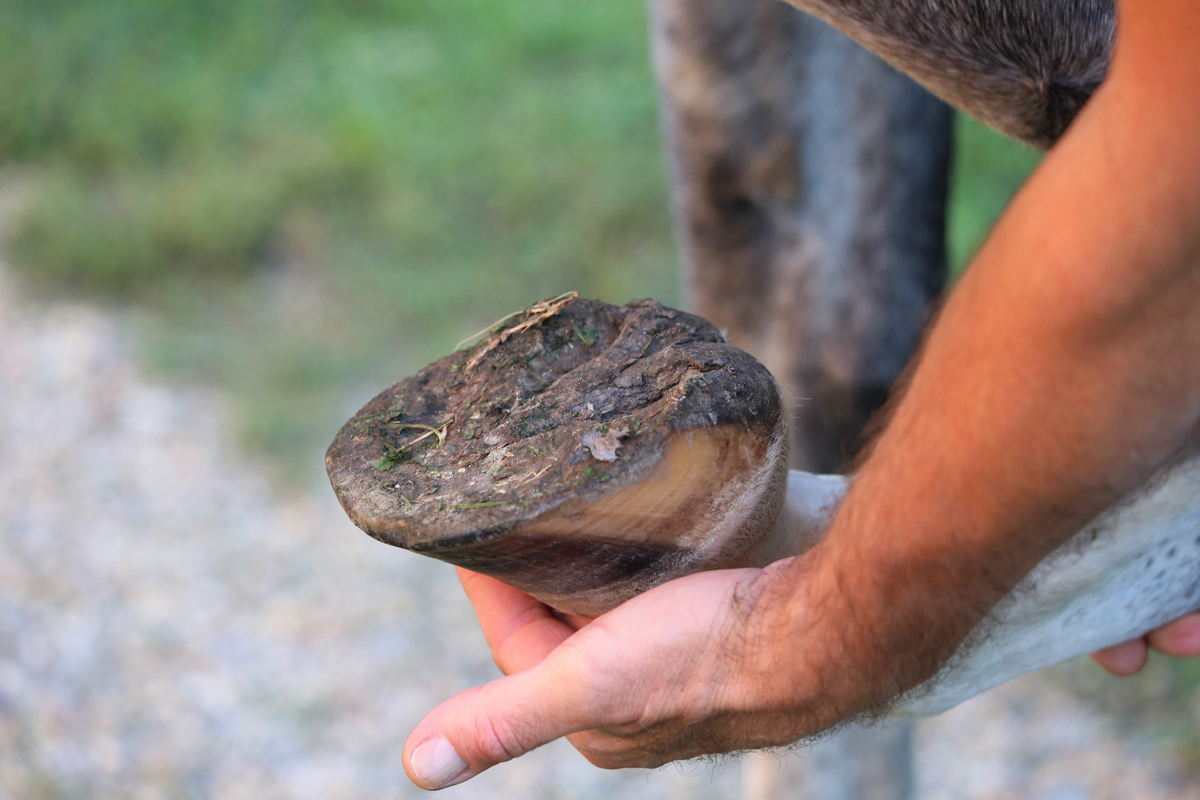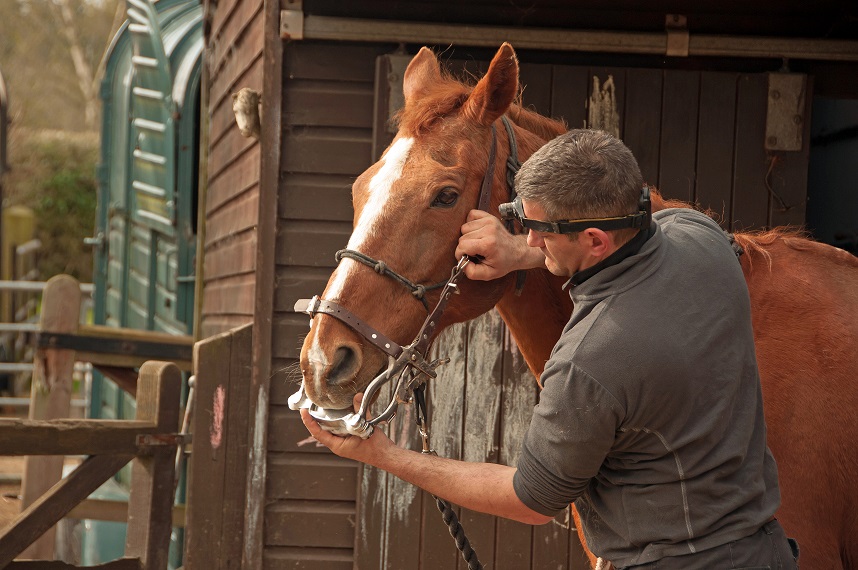Owing to their athletic and intelligent nature, ex-racehorses are a very popular choice for experienced horse owners seeking a new challenge.
Having been used to handling they are usually good to load, travel and shoe. However, while many racehorses are retired because they’re simply not fast enough rather than because of illness or injury that doesn’t mean they don’t have medical needs.
Making sure you’ve got adequate insurance for a horse in place to take care of your ex-racehorse is only the start. What veterinary checks will your new equine friend need to ensure a long, happy and fulfilling life?
Healthy hoof, happy horse
Just like any breed of horse, the thoroughbred’s hoof contains some incredibly complex and sensitive structures vital to its health. Indeed, any untreated damage or infection of the hoof structures can soon lead to such extensive damage that chronic lameness develops and the horse may even have to be put down.
Unfortunately, because thoroughbreds have been bred with so many things in mind – speed, precocity and conformation – sometimes their feet get ignored. In general, thoroughbreds have small feet in comparison to their body size which means this area receives a lot more concussion when racing.
In addition, having thin-walled and thin-soled feet increases the likelihood of bruising, corns and hoof wall cracks compared to other breeds.
But there’s no reason to despair. With a good farrier, a better diet and regular hoof care, your ex-racehorse should be fine. To prevent the toe becoming too long and the heels collapsed, it’s recommended that shoeing takes place every four to six weeks.
Speak to your vet about adding a hoof supplement to their diet and perhaps apply a hoof balm during the summer months to prevent drying out and cracking. In winter it might also be worth limiting time spent in wet, muddy conditions or providing extra protection for the hooves.

Feeding advice
As already mentioned, racehorses are fed a very specific diet when in training to deal with the challenging physical demands of racing and to perform at their best on the race track.
However, when they stop racing their energy demands will change but it’s still vital to ensure they maintain a healthy diet to reflect their workload.
Speaking to your vet first about possible changes to their diet is important so it doesn’t affect their overall health. For example, gastro-intestinal upsets can easily occur if changes are too much and too fast. Changes could include increasing access to pasture, probiotic supplements and increased forage.
Ulcer check
Unfortunately, despite the high levels of care they receive, racehorses can often develop gastric ulcers.
Again, part of the problem comes down to their high concentrate, low fibre diet that means their stomach lining suffers prolonged exposure to acid.
Also the racing environment can be stressful for a horse and can increase the risk of ulcers.
If your ex-racehorse shows any of the following signs, you should contact your vet for treatment and advice:
- Reduced appetite
- Weight loss
- Poor coat condition
- Recurrent colic
- Change in behaviour
- Poor performance
While worming and vaccinations should have been kept up to date, it’s still worth checking with your vet. It’s important to keep a horse protected from equine influenza even if you decide not to have a tetanus jab.
Testing teeth
Due to the energy requirements of a racehorse in training they tend to be fed large amounts of easily chewed and digested concentrate feed.
While this is great for racing, the decreased chewing time means their teeth aren’t worn down as much as if they were on a more natural higher fibre and roughage diet.
In racehorses, the outside edge of the upper teeth and the inside edge of the lower teeth can become very sharp causing painful ulceration of the cheeks and cuts to the tongue.
Retraining your ex-racer will be impossible if they’re in such discomfort.
To prevent pain and possible infection, filing (also called floating) of these edges should be undertaken by a vet.
In any event your ex-racer’s teeth should be checked every six to 12 months by a professional. Be sure to check your horse insurance to see what dental procedures are covered.

Old injuries
In view of the extreme physical tests these beautiful creatures are put under, it’s common to find that ex-racers still have problems with previous fractures and musculoskeletal injuries.
While you should have been made aware of any previous injuries when you bought the horse, it’s vital you and your vet keep a watchful eye out for some of these common problems.
Sacroiliac damage
This is a common problem among thoroughbreds who’ve had racing careers. The sacroiliac joint is found between the horse’s hind legs and spine and comes under a lot of pressure when racing.
The ligaments in this area are a common source of damage among racehorses and can cause issues for years after their career on the track has ended.
Knee damage
The knees of a horse are a complicated area where damage can easily occur. Even if the injury was treated properly at the time it can still lead to painful osteoarthritis later on. Be on the lookout for puffiness around the joint.
Tendon and ligament injury
The tendons and ligaments running down the back of the horse’s leg are particularly vulnerable to injury while galloping or landing.
Insuring your trusty thoroughbred
Owning a former racehorse is both fun and challenging and with horse insurance from Equesure, you can be sure of help with any unexpected costs that arise.
Whatever future career you have in mind for them, make sure they’ve got the protection they deserve by speaking with our team of equine insurance specialists. They’re here to make finding the right cover as simple and straightforward as possible.
Our policies offer three options for cover when it comes to veterinary fees:
- Option 1 – £4,500 per incident with unlimited claims in the year
- Option 2 – £7,500 per incident with up to £15,000 in the year
- Option 3 – £5,000 per incident with £2,500 top up for life-saving surgery
Multi-horse policies are also available for those with more than five horses.
Get a quote for horse insurance today.
Policy benefits, features and discounts offered may very between insurance schemes or cover selected and are subject to underwriting criteria. Information contained within this article is accurate at the time of publishing but may be subject to change.





